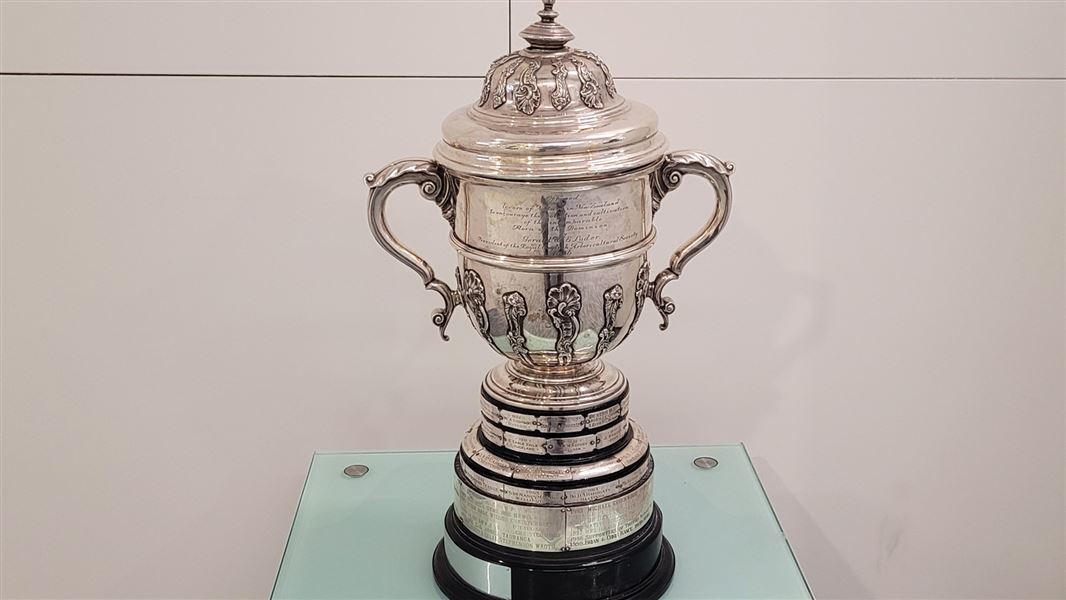The Cup is awarded by the Minister of Conservation each year to a person or group of people who best represent the objectives of the Cup, to celebrate their outstanding conservation work in Aotearoa New Zealand.
Who it's awarded to
The Loder Cup is awarded to recognise the tremendous contribution individuals make to the preservation and protection of the unique flora of Aotearoa New Zealand for future generations.
The Minister of Conservation can award the Loder Cup to any person or group of people who are put forward by one of the nominating organisations. The Loder Cup Committee, comprised of Ministerial appointees, assesses the nominations each year against how the nominee:
- meets Gerald Loder’s objective to “encourage and honour New Zealanders who work to investigate, promote, retain and cherish New Zealand’s indigenous flora”.
- has made a tangible difference to the protection of Aotearoa New Zealand’s indigenous flora.
- has made a significant contribution over and above their employment expectations (if they work in the field of botany, plant conservation, or horticulture).
The Loder Cup Committee then provides its recommendation for the award to the Minister of Conservation, whose decision is final.
Each nomination will be considered for three years in a row, unless they win the Loder Cup, or the nominating body withdraws the nomination. After the third year, the nominating body must wait a year before submitting a nomination for the same person or group of people.
Who can nominate a person or group
Each of these organisations may nominate one person or one group of people for the Loder Cup:
- Royal New Zealand Institute of Horticulture*
- Royal Society Te Apārangi*
- New Zealand Botanical Society
- New Zealand Plant Conservation Network
- New Zealand Plant Producers Incorporated
- Royal Forest and Bird Protection Society of NZ*
- Recreation Aotearoa*
- New Zealand Conservation Authority
- Any Conservation Board
- Any university in Aotearoa New Zealand
- Any private person through one of the organisations listed above*
*and any affiliated society. Affiliated societies/private people must specify the official nominating organisation they are linked to.
Nominations open in March/April each year.
View this information in a factsheet (PDF, 1,700K)
The Loder Cup’s history
Gerald Loder donated the Cup in 1926 to 'encourage and honour New Zealanders who work to investigate, promote, retain and cherish our indigenous flora'.
Gerald Walter Erskine Loder was born in 1861 in Sussex, England. He studied Law at Cambridge University and in 1886 he travelled to countries including Australia, New Zealand, China, Japan, Canada, and the USA.
In his life, Gerald Loder was a barrister, businessman, politician, botanist, and plant collector. He was a Justice of the Peace, Deputy Lieutenant for Sussex, and served as President of the Royal Horticultural Society (1929-31) and President of the Royal English Arboricultural Society (1926-7).
In 1902, Gerald Loder purchased the Wakehurst Estate (West Sussex) and began expanding the garden, acquiring plants and seeds from various expeditions that he helped to fund, and within five years there were approximately 3,000 different species and cultivators. He practiced an interest in nurturing rare plants, particularly from the southern hemisphere, and particularly from New Zealand. In 1934, two years before his death he was made a peer, Lord Wakehurst of Ardingly.
Gerald Loder donated the Cup to New Zealand in 1926, after “having for many years taken an interest in the flora of New Zealand, and having cultivated as many New Zealand plants as possible at home”.
Gerald Loder was captivated by our indigenous flora on his first visit to New Zealand in 1886, and remained passionatly involved with our "incomparable flora" until his death in 1936.
